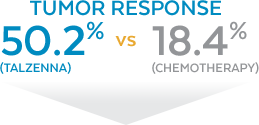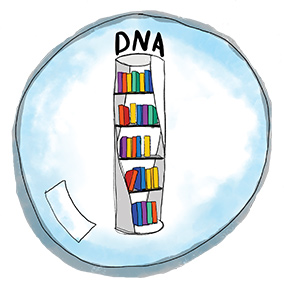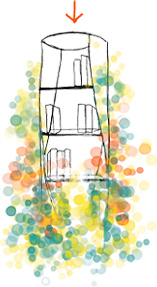WHAT IS TALZENNA?
TALZENNA is a prescription medicine used to treat adults with a certain type of breast cancer (gBRCA-mutated, HER2-) that has spread to other parts of the body (locally advanced or metastatic). Your healthcare provider will perform a test to make sure that TALZENNA is right for you. It is not known if TALZENNA is safe and effective in children.
TALZENNA is a once-daily oral treatment. Refer to STARTING AND TAKING TALZENNA for more information.

Clinical Study Results
TALZENNA was studied in a clinical trial of 431 patients with gBRCA-mutated, human epidermal growth factor receptor 2-negative (HER2-) locally advanced or metastatic breast cancer (LA/MBC) who had previously received up to 3 rounds of chemotherapy and no previous PARP inhibitor therapy. Patients in the trial had either hormone receptor-positive (HR+), HER2- breast cancer, or triple-negative breast cancer (TNBC).
Patients were split into 2 groups. The first group (287 patients) received TALZENNA, while the second group (144 patients) received their healthcare provider’s choice of chemotherapy (capecitabine, eribulin, gemcitabine, or vinorelbine).
TALZENNA was significantly more effective at delaying disease progression than chemotherapy.
In this clinical trial, disease progression was delayed for a median of 8.6 months in patients taking TALZENNA, which means their tumors did not grow or spread in that time, compared to 5.6 months for patients taking chemotherapy.

TALZENNA reduced the risk of cancer growing, spreading, or getting worse by 46% vs chemotherapy.
Progression was seen in 185 (65%) of patients on TALZENNA and 83 (58%) of patients on chemotherapy.
This study also measured the total time patients on each medicine remained alive after starting treatment (overall survival). There was no significant difference in overall survival between the patients taking TALZENNA and the patients taking chemotherapy.
In the same clinical trial, tumor response to treatment was measured. The results showed that in patients who received TALZENNA, tumor response was 50.2%—meaning half (110 of 219) of patients saw their tumors shrink in size—compared to 18.4% (21 of 114) for patients who received chemotherapy. The percentage of patients who saw their tumors shrink was over 2X higher for TALZENNA vs chemotherapy.

Tumor Response = Complete Response + Partial Response
Complete Response
All signs of cancer disappear, but this does not mean that the cancer is cured. 5.5% of patients taking TALZENNA VS 0% of the patients taking chemotherapy
Partial Response
Tumors that shrink by 30% or more. 44.7% of patients taking TALZENNA VS 18.4% of the patients taking chemotherapy
The length of time the tumor response lasted before the tumors resumed growing or spreading was a median time periodMedian Time Period In a cancer treatment study, median time period of tumor response means that half of the patients responded to a treatment for at least a specific amount of time and half responded for less than that specific amount of time. of 6.4 months in patients taking TALZENNA and a median time periodMedian Time Period In a cancer treatment study, median time period of tumor response means that half of the patients responded to a treatment for at least a specific amount of time and half responded for less than that specific amount of time. of 3.9 months in patients taking chemotherapy.
How Talzenna Works In Cells
When DNA within a cell becomes damaged, the BRCA proteins work along with other DNA-repair proteins to help repair damaged DNA. When cells have a gBRCA mutation, the cells cannot repair their DNA normally—and this can sometimes cause cancer to form. Because these cancer cells have defective BRCA proteins to repair their DNA, the cells rely on other DNA-repair proteins, like PARP, to keep the cancer alive. Treatments that block PARP, also called PARP inhibitors, are one way to treat gBRCA-mutated, HER2- LA/MBC.
TALZENNA is a potent PARP inhibitor that may help shrink or slow the growth of gBRCA-mutated, HER2- LA/MBC. TALZENNA may also cause serious side effects. Please see Important Safety Information to learn more.
Use the yellow arrows to navigate the animation below, demonstrating how TALZENNA works to inhibit PARP.
gBRCA=germline (or inherited) BRCA, HER2-=human epidermal growth factor receptor 2 (HER2)-negative, HR+=hormone receptor-positive, LA/MBC=locally advanced or metastatic breast cancer, PARP=poly (ADP-ribose) polymerase, TNBC=triple-negative breast cancer.






